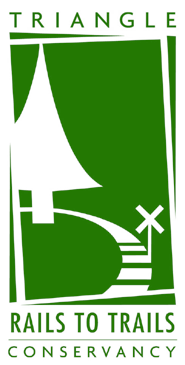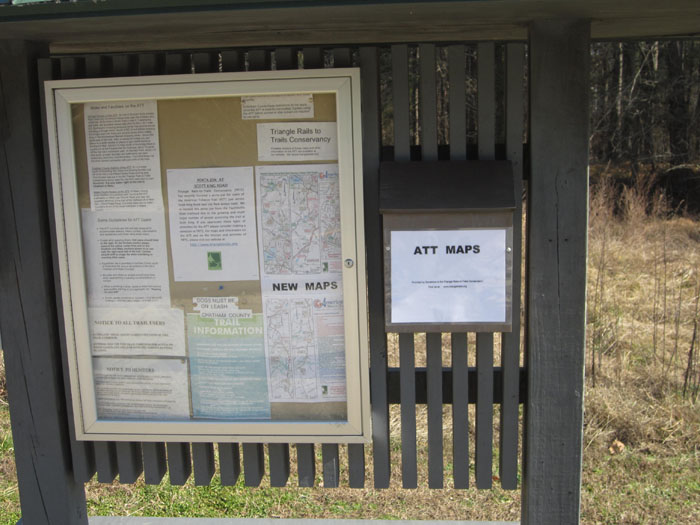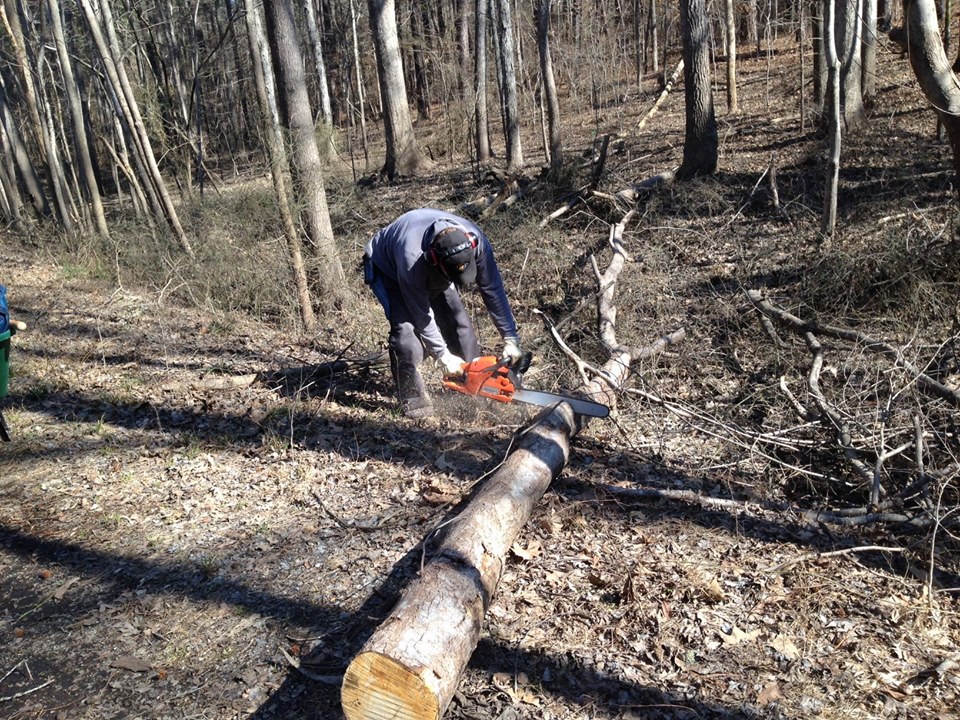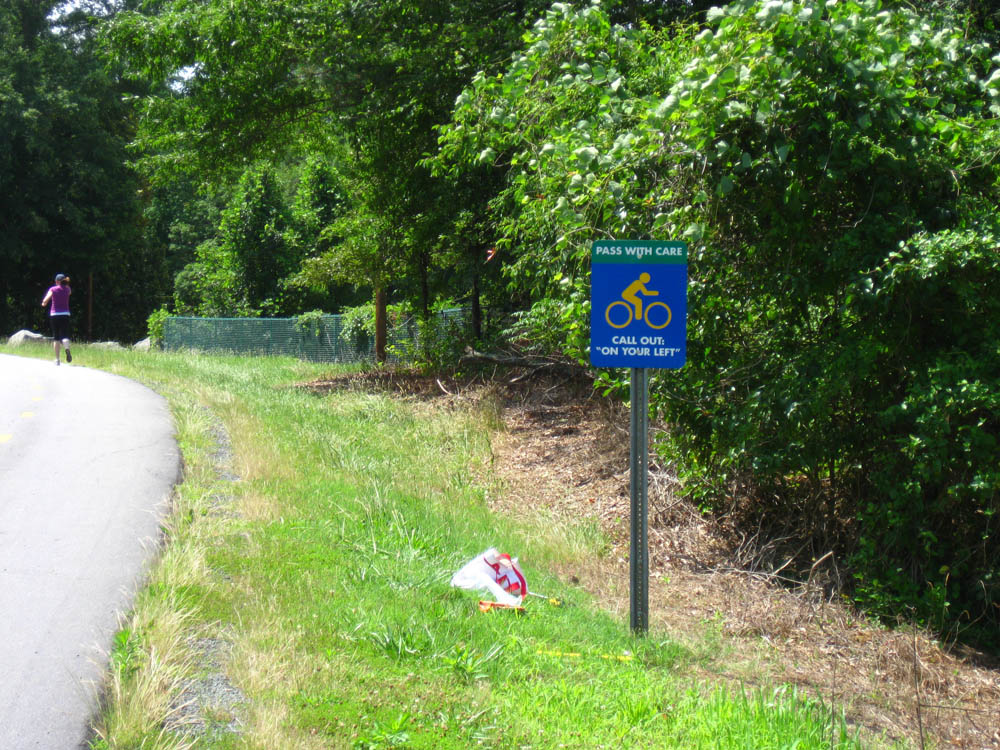There are two inactive and connecting rail corridors in Durham and Person County. The Duke Beltline is a corridor that encircles downtown Durham. This stretches about 2 miles (between Blackwell St. and Avondale Drive). The Durham-Timberlake corridor goes north to Timberlake, and equals about 23 miles. When put together, they are sometimes known as the ‘501 corridor.’
For years, local governments and organizations (including TRTC) have dreamt of using these corridors for trails, mass transit, or a combination of both. If these corridors were to become rail-trails or a ‘rails with trails’, possible names for them would be the Duke Beltline & Durham-Timberlake Trails. Norfolk-Southern (which owns most of these corridors) and NCDOT entered negotiations for purchase of both corridors in 2005. In July 2005, negotiations between NCDOT and Norfolk-Southern were dropped for purchase of this corridor. The hope is that NCDOT can one day ‘railbank’ the corridors, i.e. protect them from future encroachment. They could then lease them to local governments for development of interim trails.
Maps
- American Tobacco Trail and Durham US 501 Rail Corridor Map
- Duke Beltline Corridor
- Beltline and Timberlake Corridors Map
Duke Beltline
This entire corridor forms a crescent around downtown Durham. One can see traces of the southern quadrant along the active rail line downtown. On the western section, it crosses over Chapel Hill Street, goes past the new West Village development, skirts along the old Durham Athletic Park, and crosses Washington Street. The northern section goes under Mangum Street, crosses Roxboro Street, and goes under Avondale Drive. It connects to the Timberlake corridor east of Avondale Drive with a ‘wye’. In July 2005 negotiations between NCDOT and Norfolk-Southern for purchase of this corridor broke down, from all indications because of the substantial asking price. As of late 2014, $2,000,000 from a 2005 Federal appropriation is still available to the City of Durham for use in corridor preservation. Private discussions between Norfolk-Southern, NCDOT and Durham were held during the 2011-13 period but nothing has been reported to indicate that the parties are close to a sale. Congressman David Price and NCDOT strongly urged the City to find a use for this special 2005 funding soon since Federal recision of these older appropriations was likely. In September 2014 Durham received a $222,000 TIGER grant from the U.S. Department of Transportation to develop a Master Plan for the Duke Beltline. Preparation is scheduled to begin by June 2015. The Master Plan was completed in late 2017. During 2015 to 2018 private discussions between Norfolk Southern and the Conservation Fund partnering with the City were held about future acquisition of the corridor. These were ultimately successful and the Fund was able to purchase and hold the Beltline property until funding from the City was authorized.
The Durham Belt Line is a 1.7 mile-long stretch of inactive railroad right-of-way that runs from the area around Avondale Drive and Trinity Avenue to just northeast of the Durham Amtrak Station at West Chapel Hill Street, forming a crescent around downtown Durham. It ends two blocks from the American Tobacco Campus and Durham Bulls Athletic Park, the northern end of the American Tobacco Trail (ATT).
The City of Durham purchased the Belt Line corridor in September 2018 from The Conservation Fund, a non-profit organization dedicated to creating solutions that make both environmental and economic sense across the United States. The City acquired the property using a combination of federal funds and local match funds. The federal funds for the project were provided through the competitive Transportation Improvement Program managed by the North Carolina Department of Transportation (NCDOT). Once completed, the Durham Belt Line will connect Downtown Durham, the Innovation District, the Central Park and DIY Districts, the Trinity Park, Pearl Mill Village, Old North Durham and Duke Park neighborhoods, and the Avondale Drive-Trinity Avenue business district. The City adopted the Master Plan in 2018 but progress in design was limited during the pandemic.
The recommendations outlined in the Durham Belt Line Master Plan are meant to guide the next phases of the project, which include detailed design and eventual construction. The Master Plan identifies a conceptual design and discusses the trail cross-section, access points, opportunities for historic preservation, placemaking, and development along the trail. While many of the recommendations are focused on the design of the trail, policy recommendations are included to guide implementation of the overall vision and ensure that the project benefits all of Durham. During 2022 the City hosted a number of events to gather input from the public and other Stakeholders on the design, access points and potential amenities. Design has been largely completed. Due to the substantial costs for the entire project (estimated at $9.5 million in 2019) the beltline will be built over several years.

Blackwell Street in downtown Durham

West Village apartments on Morgan St., Durham

Washington Street looking east
Durham-Timberlake
This corridor begins at the NC Railroad corridor near Fayetteville Street and stretches northward toward Timberlake in Person County. Along the way it goes under Geer Street and I-85, crosses the Eno and Little Rivers, and passes through Treyburn, Bahama and Rougemont. On June 21, 2005 Norfolk-Southern withdrew this corridor from the market. We hope that negotiations can again resume for this corridor, which would open up alternative transit options to northern Durham County and beyond.




